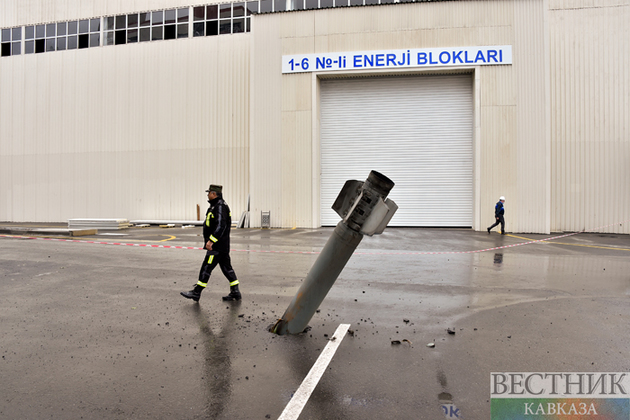Despite the end of the war and the signing of a ceasefire agreement between the parties, the war of information continues, Modern Diplomacy writes.
In the First Karabakh War, Armenians in Azerbaijan’s Karabakh region were ideologically influenced by radical Armenian organizations; they then declared the separation of this region through a so-called parliament and referendum. Armenia armed these separatist groups against Azerbaijan; carried out terrorist attacks in various regions of Azerbaijan; and succeeded in manipulating international public opinion through its diaspora. The Armenian army then crossed the border in a direct invasion that can be understood as ethnic cleansing, as it caused nearly one million people to become refugees for 30 years. Diplomatic efforts to end the occupation over the subsequent 30 years did not yield results and, as a result of a fresh provocation, a new war started on September 27, 2020. To continue the occupation, the occupier implemented various tactics during the Second Karabakh War in 2020: disinformation, cyberattacks, and attacks targeting civilian targets and strategic infrastructure with ballistic missiles.
In the Second Karabakh War, Armenia identified three main target groups for disinformation purposes: its own society; the people of Azerbaijan; international community.
Armenian society has been under a rigid nationalist ideological influence for 30 years. The Armenian community believes that what they hear is the only truth. During the 44-Day War, each withdrawal of their forces was announced a few days late. While Armenia played the role of victim abroad, internally it spread the news that Azerbaijan had suffered heavy losses; moreover, it was argued that they were fighting not only Azerbaijan, but no evidence was produced. While doing all this, the country’s main objective was to overcome its weaknesses and to hope for international support by prolonging the war.
For a long time, Armenia hoped to create social unrest in Azerbaijan by using ethnic minorities there. However, all the people of Azerbaijan fought against the foreign invasion with their lives. There were also Azerbaijani Russians who lost their lives. Armenia also tried to create fear and panic by attacking civilian settlements in Azerbaijan, but, while doing this, Armenia simultaneously continued to play the victim in the international arena. In doing so, the country carried out a very serious policy of black propaganda, hate speech, and disinformation using the media and social networks.
Armenia conducted three types of perception operations in the international arena. In the Christian world, it tried to create the perception that this war was going on between ‘a Christian democratic state and a Muslim undemocratic state.’ Moreover, Armenia tried to gain the support of liberals in the West by creating the image that the minority Armenian civilians living in Azerbaijan were under attack by Azerbaijan. In Muslim countries, the image was created that this was not a religious war, but an ethnic one. In the Arab world in particular, taking into account the geopolitical conditions of the period, Armenia tried to create the idea that this was a Turkish–Armenian war.
To create a false perception in the international public arena, Armenia actively used social media. During the first two days of the war, a rash of Twitter accounts discussing the conflict were created.
Between September 27th and 29th, a study collected 206,116 tweets containing hashtags associated with the conflict. During this time frame, 70,350 unique accounts were identified in the data set, of which 7,764 s were created within the span of those two days. These recently created accounts accounted for 14.5% of all tweets. Moreover, it was possible to see that the official news of the Armenian government was translated into English, Spanish, Ukrainian, and German by these twitter accounts.
On February 23, a statement was made on Twitter on the subject: Once our investigations were complete, the 373 associated accounts across the four networks were permanently suspended from Twitter for violations of our platform manipulation policies.
Under our platform manipulation policy, we investigated and removed 35 accounts that had ties to the Government of Armenia. These accounts were created in order to advance narratives that were targeting Azerbaijan … In some cases, the fake accounts purported to represent government and political figures in Azerbaijan, as well as news entities claiming to operate in Azerbaijan.
Thus, these accounts engaged in spam activity to gain followers and further amplify the Armenian narrative. It was determined that a fake account was opened on behalf of the Azerbaijani Ministry of Defense and some officials. Moreover, according to official information issued by Azerbaijani state organizations during the 44-Day War, 2,678 attacks were carried out from the Armenian side. The invader actually tried to hide the facts through disinformation. The main goal of the aggressor was to legitimize the occupation of the Azerbaijani territories that it had controlled since 1994, and even to expand the occupation if possible; to prevent the civilian population from returning; and to put pressure on Azerbaijan to accept the occupation.
While Azerbaijan was defending itself against the invading army at the front, it had to struggle with this disinformation from the occupier in the international arena. To supply accurate information, Azerbaijan’s President Ilham Aliyev gave more than 30 reports exclusively to international media organizations, and international media meetings were held in Baku. It is especially important to emphasize the role of the Turkish media during and after the war in the announcement of truth and justice to the international community.
Today, if Azerbaijan had not implemented a successful communications strategy, the invader would have achieved its goals. Thus, there is a need for strategic communication, and it is necessary to develop it strongly in regard to such situations. To sum up, in this case, Azerbaijan carried out a very successful strategic communication initiative that can be a model for many states that have suffered injustice.






